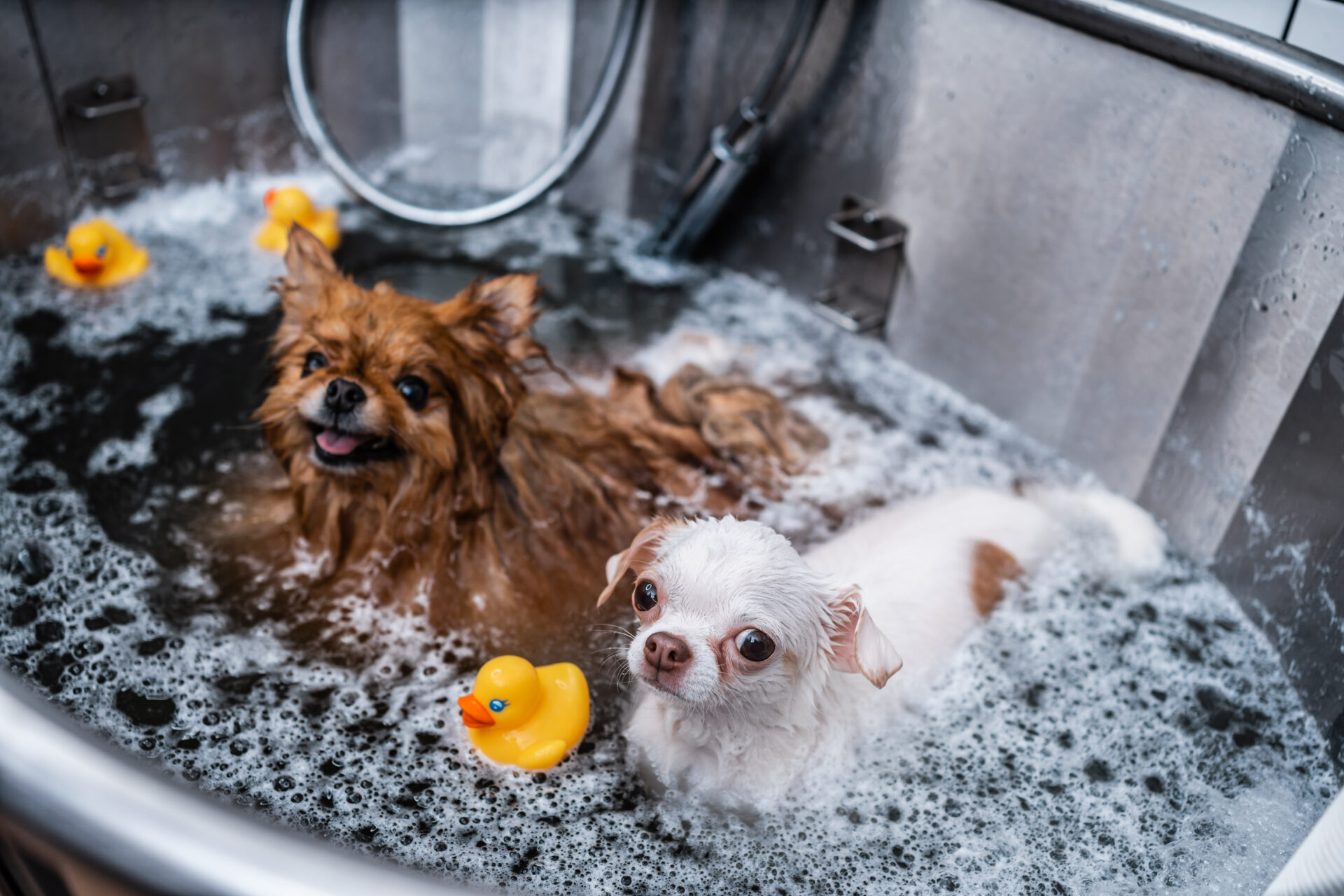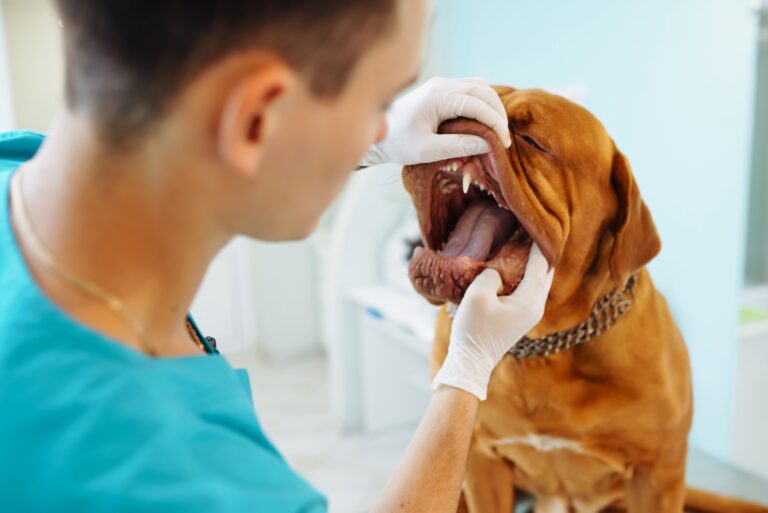Bathing your dog at home might seem like a daunting task, especially if your pup isn’t a fan of water. However, with a little preparation, patience, and the right technique, bath time can become a positive experience for both of you. Regular baths are essential to keep your dog’s coat clean, their skin healthy, and their overall hygiene in check.
This guide will walk you through everything you need to know about bathing your dog at home, from gathering the right supplies to ensuring they’re comfortable throughout the process.
Some of the links on this page are affiliate links, which means we may earn a commission at no extra cost to you if you make a purchase. As an Amazon Associate I earn from qualifying purchases. We only recommend products we genuinely love and think you’ll find helpful!
How Often Should I Bathe My Dog?
Before diving into the bath, it’s important to know how frequently your dog needs one. Overbathing can strip their coat of natural oils, leading to dry, itchy skin. In general:
- Short-haired breeds (e.g., Beagles, Boxers): Once every 6-8 weeks.
- Long-haired or double-coated breeds (e.g., Golden Retrievers, Huskies): Every 4-6 weeks or as needed.
- Dogs with oily coats (e.g., Basset Hounds): Once every 3-4 weeks.
- Dogs with skin conditions: Follow your veterinarian’s recommendations.
Dogs that get muddy, roll in something smelly, or have skin allergies might require more frequent baths, but always use a gentle dog shampoo to avoid irritation.
What You’ll Need to Give Your Dog a Bath
Having everything ready before you start can make bath time smoother and less stressful for both you and your dog. Here’s what you’ll need:
- Dog shampoo: Use a gentle, dog-specific shampoo. Avoid human shampoos, as they can disrupt your dog’s skin pH balance.
- Dog conditioner (optional): Great for dogs with long or curly coats to prevent tangles.
- Brush or comb: For removing tangles or loose fur before and after the bath.
- Non-slip mat: To prevent your dog from slipping in the tub or sink.
- Cup or spray nozzle: For rinsing your dog.
- Towels: You’ll need a few—one for drying and another to protect yourself from the inevitable shakes.
- Cotton balls: To gently place in your dog’s ears to keep water out.
- Treats: For positive reinforcement throughout the process.
Step-by-Step Guide to Bathing Your Dog
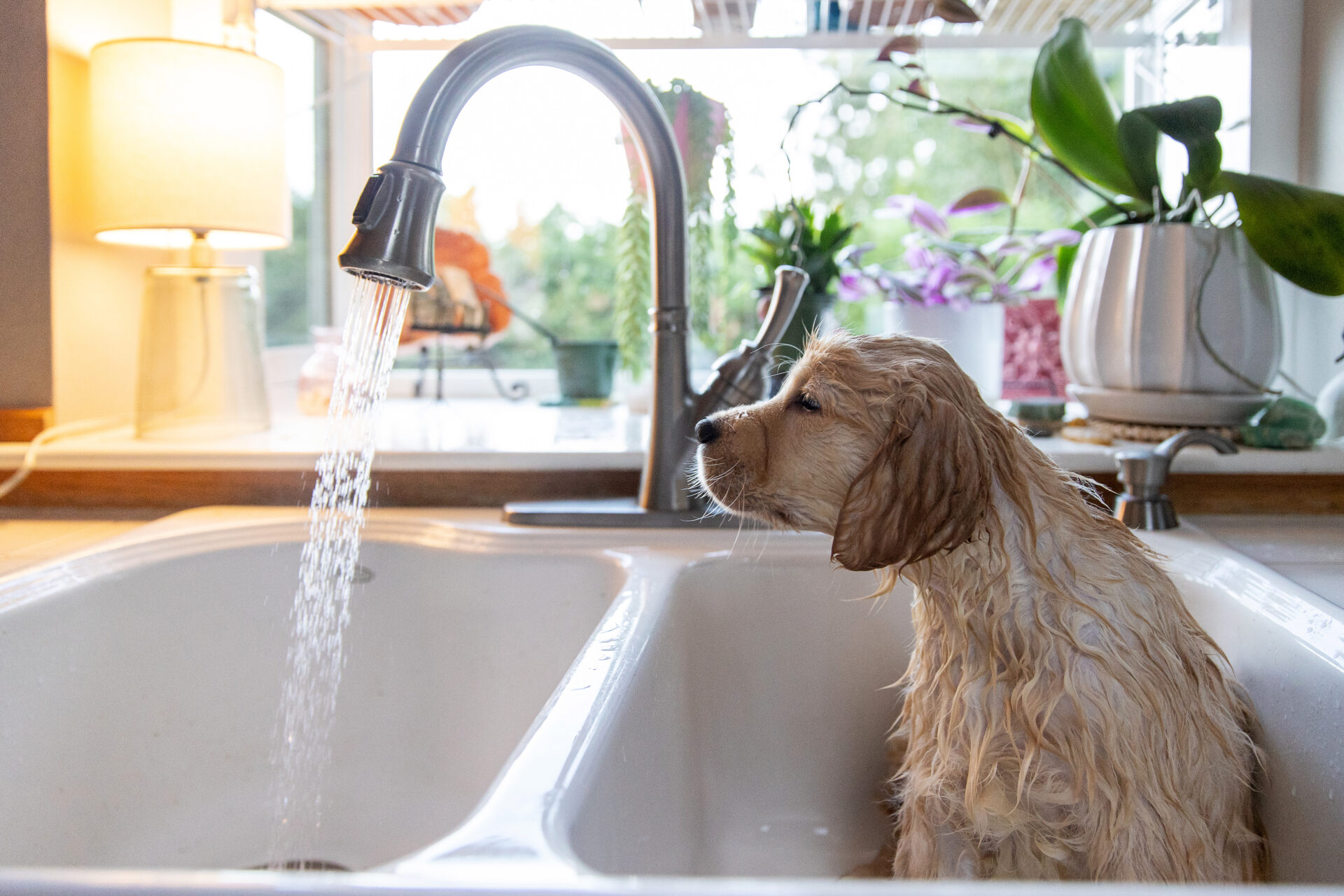
1. Choose the Right Location
The best place to bathe your dog depends on their size and comfort level.
- Small dogs: A kitchen sink or utility sink works well.
- Medium to large dogs: Use a bathtub or a walk-in shower. If it’s warm outside, a kiddie pool or hose can be a good option, but ensure the water isn’t too cold.
Always use lukewarm water—too hot or too cold can be uncomfortable for your dog.
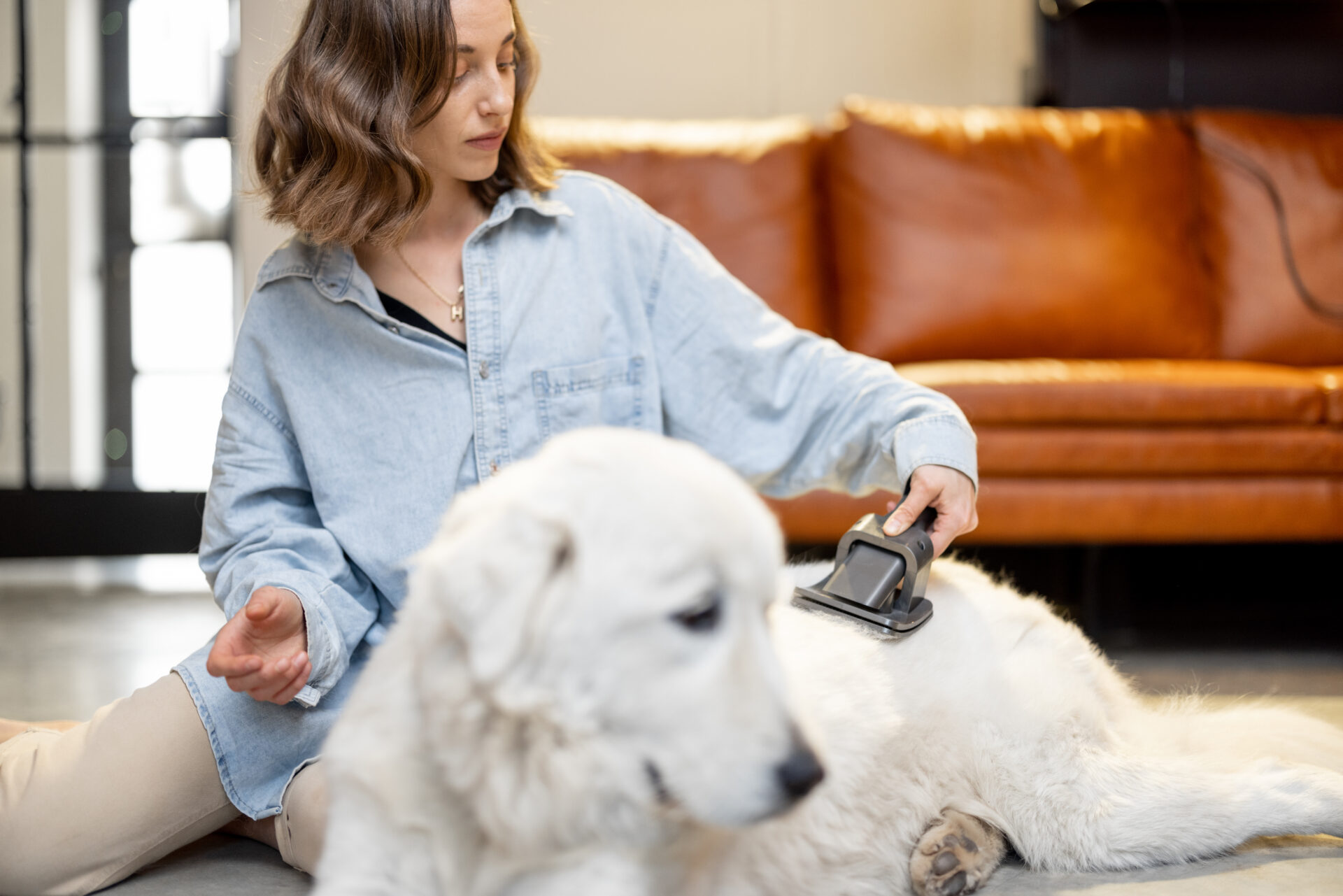
2. Brush Before the Bath
Brushing your dog’s coat before the bath removes loose fur, dirt, and tangles, making the washing process easier. It also prevents mats from getting worse when wet, as water can tighten knots.
For double-coated or long-haired breeds, spend extra time brushing to ensure their coat is tangle-free.
3. Prepare Your Dog
If your dog is nervous about baths, ease them into the process:
- Let them sniff the bathtub or sink before you start.
- Turn on the water at a low pressure to let them get used to the sound.
- Offer treats and speak to them in a calm, soothing tone.
Place a non-slip mat in the tub or sink to help your dog feel secure and prevent slipping.
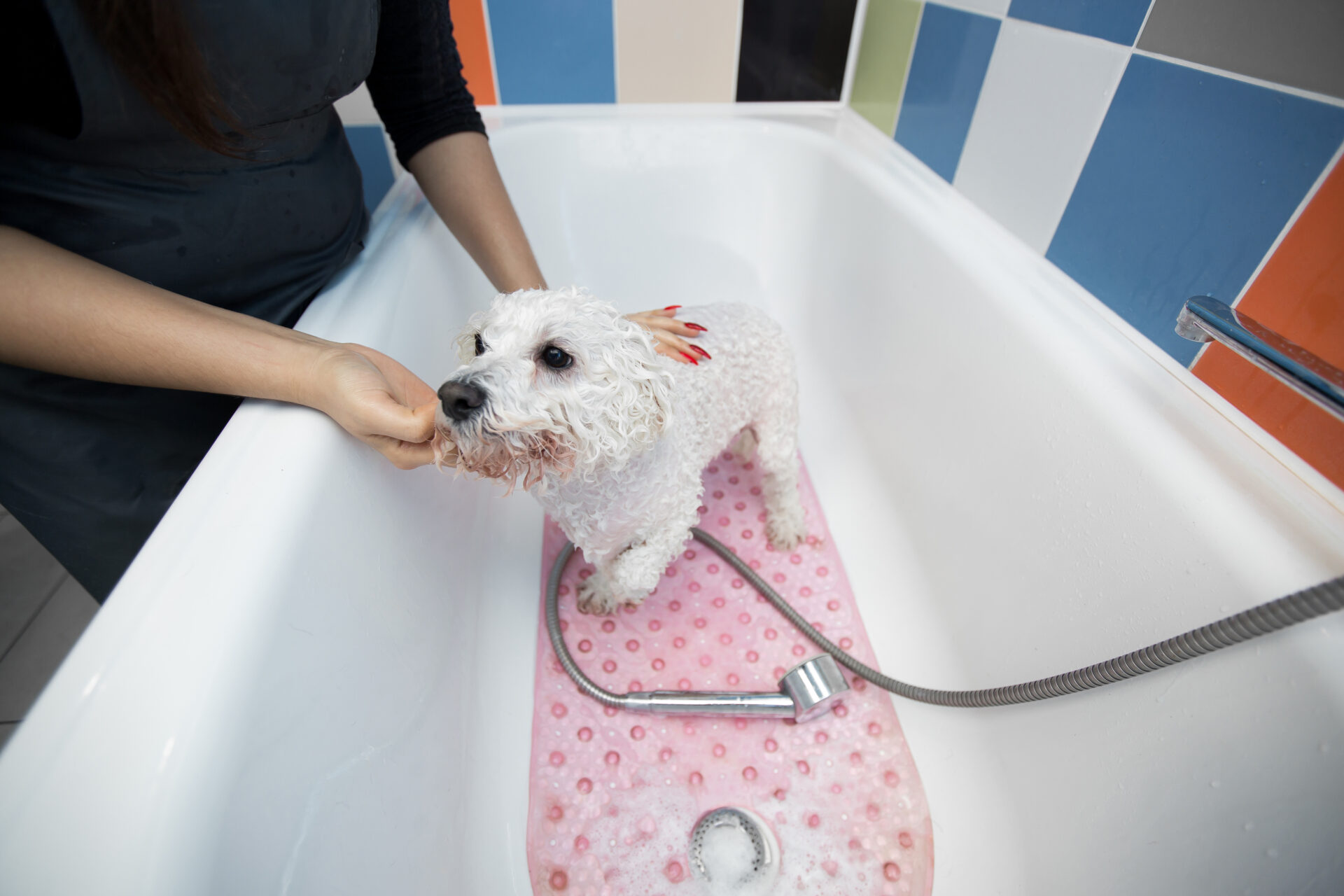
4. Wet Your Dog Thoroughly
Using lukewarm water, gently wet your dog’s coat from neck to tail. Be careful to avoid their eyes, ears, and nose.
If your dog has a thick or double coat, make sure the water penetrates all the way down to their skin. This might take some extra time, but it ensures the shampoo will be effective.

5. Lather with Shampoo
Apply dog shampoo and lather it into their coat, starting from their neck and working your way down. Use your hands to massage the shampoo into their fur and skin, being gentle around sensitive areas.
For the face, use a damp washcloth to clean without getting soap near their eyes or ears.

6. Rinse Thoroughly
Rinse your dog’s coat with lukewarm water, making sure to remove all the shampoo. Residue can cause itching or irritation, so take your time to ensure the water runs clear.
For dogs with thick coats, rinse several times to ensure no shampoo is left behind.
7. Apply Conditioner (Optional)
If your dog’s coat is long, curly, or prone to tangling, consider using a dog-safe conditioner. Apply it after rinsing the shampoo and let it sit for a few minutes before rinsing it out thoroughly.

8. Dry Your Dog
After rinsing, gently squeeze excess water from your dog’s coat. Use a large towel to dry them off, focusing on areas like their belly, legs, and undercoat.
For dogs with thick or long coats, you can use a pet-safe blow dryer on the lowest heat setting. Hold the dryer at a safe distance and keep it moving to avoid overheating any area.
Be prepared for the inevitable shake—dogs love to get rid of excess water this way!
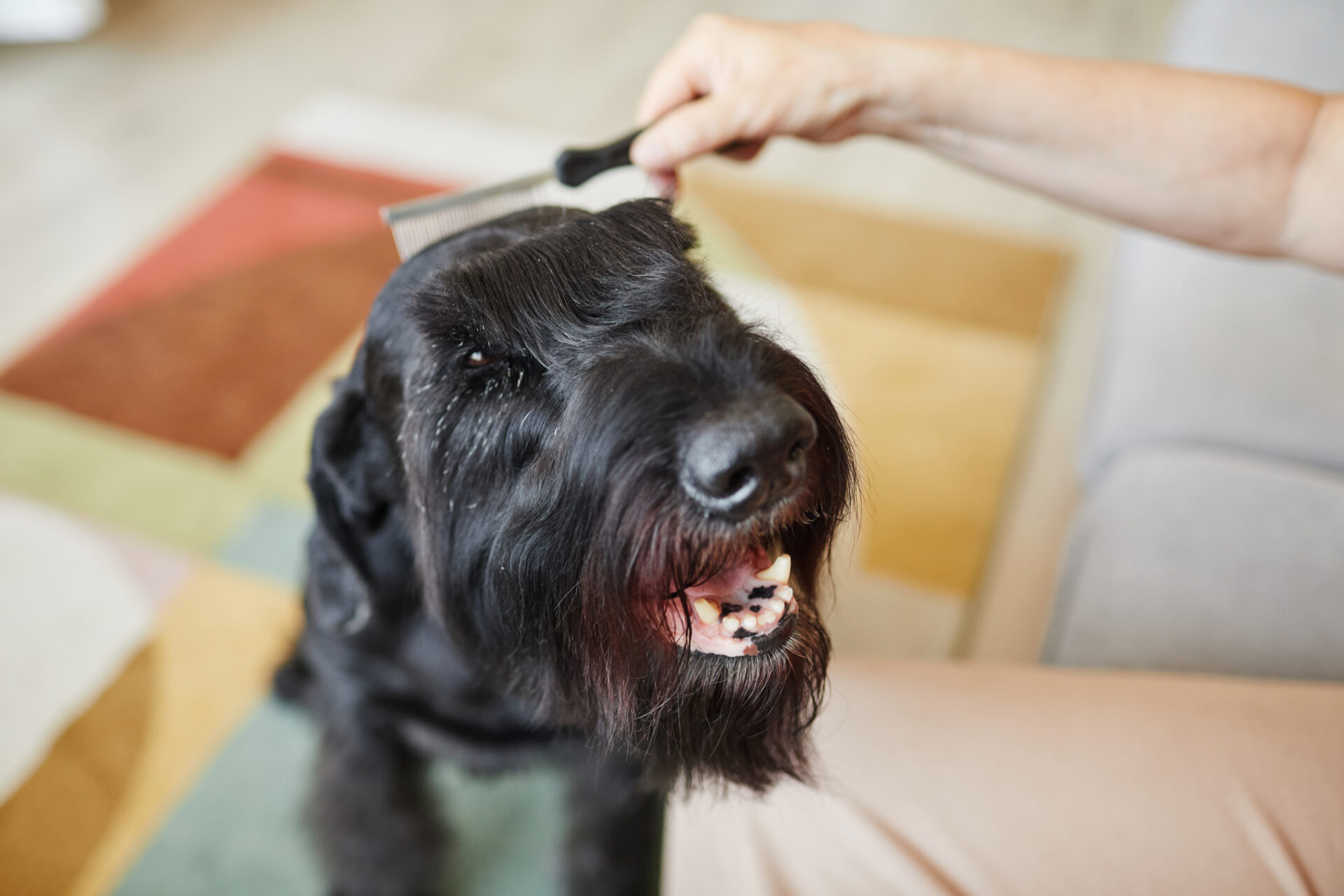
9. Brush Again
Once your dog is mostly dry, brush their coat again to remove any remaining loose fur and ensure their coat is tangle-free. This step is especially important for long-haired breeds.
Tips for a Positive Bathing Experience
- Start Slow: If your dog is nervous, begin with short, stress-free sessions. Let them get used to the process gradually.
- Use Treats and Praise: Reward your dog throughout the bath to create a positive association.
- Stay Calm: Dogs pick up on your energy, so staying relaxed will help them feel more at ease.
- Keep Sessions Short: Aim to finish the bath in 10-15 minutes to prevent your dog from becoming stressed or restless.
When to Seek Professional Help
For some dogs, professional grooming may be necessary:
- If your dog has severe mats that you can’t remove safely.
- If they’re very large or difficult to handle during a bath.
- If they have skin conditions requiring medicated baths.
Professional groomers have the tools and experience to make the process easier and safer for both you and your dog.
Conclusion
Bathing your dog at home doesn’t have to be a chore—it can be a fun and rewarding bonding experience with the right approach. By preparing properly, using dog-safe products, and making the process as stress-free as possible, you’ll ensure your pup stays clean, healthy, and happy.
Remember, every dog is different, and finding what works best for your furry friend may take some trial and error. With patience and practice, bath time can become an enjoyable routine that keeps your dog looking and feeling their best.

